Investigating U.S. History


The following biographies reflect a mix of actual individuals and composite characters who are representative one segment of colonial society. Biographies of actual individuals include corresponding birth and death dates. Read the short biography as presented and then click (where available) and read the longer biography.
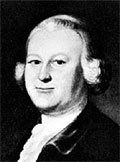
Graduate of Harvard College and noted lawyer from a prominent landowning and mercantile family. Had resigned his position in 1761 as advocate-general (attorney general) for Massachusetts to argue against writs of assistance (general search warrants that gave customs officials broad power to enter and search business and private spaces.
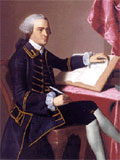
Graduate of Harvard College, ambitious merchant, and ship owner, Hancock was one of the wealthiest men in the American colonies. Had visited England as a young man on a business mission under the sponsorship of his uncle, whose wealth he inherited. Hancock was also a leading member of the colonial assembly, where he joined forces with the “country” faction; that is with the faction that tended to oppose the governor.
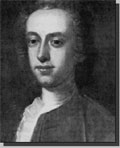
Born in Boston to a prosperous mercantile family with firm connections to English merchants. Graduated from Harvard and devoted most of his energies to government service. Was appointed to governor's council in 1749. By 1760, he was the Chief Justice and Lieutenant Governor of Massachusetts and the leading representative of the governor's or “court” faction in the legislature.

One of a number of men who operated printing presses in Boston (and the other colonial cities), producing newspapers, pamphlets, advertisements, books, and a variety of other printed matter. Among the most coveted assignments was that of official printer for the colonial government. This equated to a steady income. But the assignment was generally granted to one specific printer, who had some connection with the colonial administration. Printers were artisans (craftsmen), but they were also well versed in local politics and business, which provided them with a significant amount of information business and information.
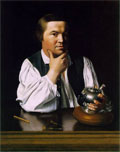
Revere was a noted artisan who worked in one of the more prestigious crafts—silversmith. His produced luxuries for the wealthiest segment of Boston. Accordingly, he competed against imports from Britain and his business suffered when the economy was weak. Revere supplemented his income by engraving copper plates that were used to print illustrations for books and a variety of other published materials. He was aided in his work by assistants in the form of apprentices and journeymen.
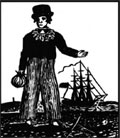
The term Jack Tar was used collectively to describe sailors in the eighteenth century. The term may originate from the use of tar to waterproof sailors' hats and clothing. Sailors in this period were positioned at the bottom of colonial society. They were rough men who earned a meager living in a dangerous trade. But they were also the most mobile and traveled segment of colonial society. Their livelihood, like that of other maritime laborers (shipbuilders, rope makers) depended on a vigorous economy that made steady use of shipping.

Harvard graduate with a variety of interests in business, Adams was noted for his religious intensity (Congregational) and for his active participation in local and colonial politics. Adams was regularly elected to the town meeting and colonial assembly, with strong support from ordinary voters. He was also noted for aggressive, florid editorials that appeared frequently in the Boston newspapers.
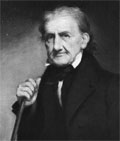
Poor Boston shoemaker's apprentice who worked on the wharf near John Hancock's warehouse and place of business. Little is known about Hewes's life before the mid-1770s, but it most likely paralleled the lives of most of Boston's apprentices and laborers. The work was hard and the hours long. Whatever free time and spending money he might have might used to “buy” a place at the local tavern, where for the price of a beer or hard cider he could converse, play cards, or possibly hear the latest news read out loud from the latest copy of the local newspaper.
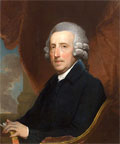
Portrait by Gilbert Stuart, c. 1806
Thomas Dawes was born in Boston, where he received a basic, but relatively undistinguished education. He was trained and worked as a mason, a well-respected craft in the colonial period. Dawes became involved in patriot politics in the early stages of the American Revolution. His connection to other craftsmen and ordinary laborers made him a valuable organizer for crowd actions. Dawes also became friendly with some of the leading patriot leaders (Samuel Adams, John Hancock and Joseph Warren) when he allowed them to use his small living space (a garret) for their secret meetings. His connection to the patriot leaders marked him as a conspirator and his home suffered damage during the British occupation of Boston.
Dawe's early and ardent involvement in patriot politics gave a significant boost to his political and economic careers. He secured a commission as a colonel in the Massachusetts militia, serving in that capacity during the American Revolution. Commissions at this level were granted by the state government and were usually given by members of the social elite.
The town of Boston elected him in 1779 to serve at the convention that drafted and enacted the Massachusetts state constitution. Other members of the Boston delegation included Samuel Adams, John Adams and John Hancock. Dawes served several terms in the Massachusetts House of Representatives and the Senate and was appointed in 1792 to the State Supreme Court (without benefit of legal training).
By 1788, Dawes had expanded his business to include development of property and homebuilding. In effect, Dawes had grown from a mason or builder of brick structures into an architect. His structures include two of the most important 18th century structures in Boston: the Old State House and the Brattle Street Church. Increasingly wealthy, Dawes built a spacious home next to the Boston home occupied by John Adams and he was one of a few men in Boston who owned a private carriage or coach. His political and economic prominence led to a number of honors. Dawes was inducted as a member of the Academy of Arts and Sciences, became a close associate of John Hancock and succeeded in placing his son, Thomas Jr., at Harvard, a privilege usually reserved at the time for men from prominent families. The portrait by Gilbert Stuart testifies to his success. Stuart, who was one of the most prominent American painters of the early 19th century, is well known for his portraits of George Washington.